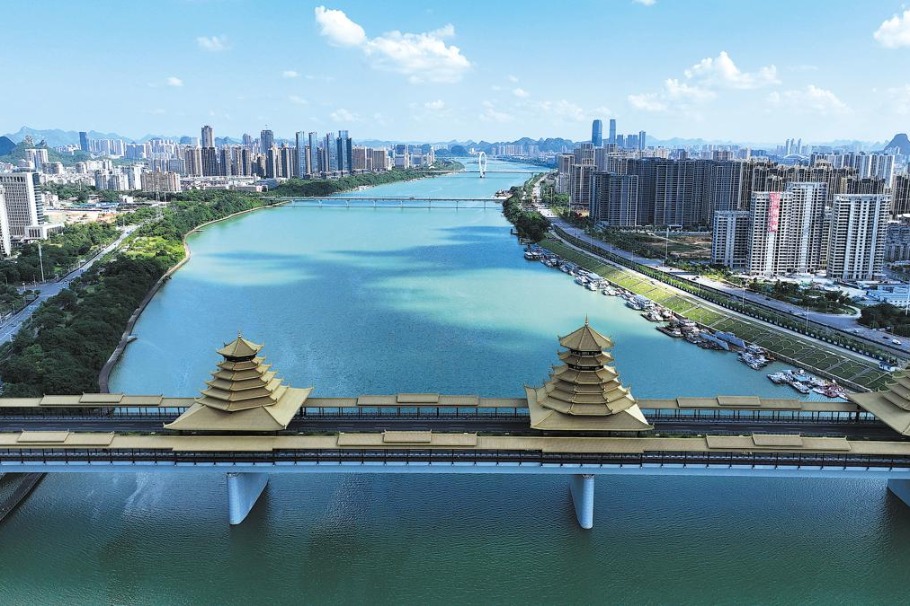Liuzhou tops water quality list for 5th year
City's efforts to stamp out industrial and household runoff yield environmental rewards

Editor's note: As protection of the planet's flora, fauna and resources becomes increasingly important, China Daily is publishing a series of stories to illustrate the country's commitment to safeguarding the natural world.

Liuzhou in South China's Guangxi Zhuang autonomous region has topped the national list for having the best water quality for the fifth year running, a milestone for a city that was once plagued by acid rain and polluted waterways.
Released earlier this year, the water quality assessment for 2024 ranked Liuzhou's waters as Class I and II in places, meaning that they were suitable as the habitats of rare aquatic species, spawning grounds for fish and shrimp, feeding grounds for juvenile fish, and even as sources for drinking water.
The picture wasn't always so rosy for Liuzhou, however, with the city for many years being a key regional industrial base, benefiting from economic development but suffering from dire pollution.
With over 3,000 enterprises in steel, auto manufacturing and machinery, industrial runoff would often end up in the city's waters.
Two decades back, faced with deteriorating water quality and environmental devastation, the Liuzhou government made the decision to redirect the development path of its traditional industrial base.
"Liuzhou was an industrial city, and there were numerous industrial wastewater outlets along the Liujiang River, which left the water very polluted," said Tang Jianhua, a 70-year-old who now regularly swims in the Liujiang.
"The water quality improved about 10 years ago, and I've been diving in the river for the past 13 years," he added.
Liuzhou has ranked first among cities above the prefecture level in surface water assessment across the country since 2020.
Wei Songning, deputy director of the water ecological environment division of the Liuzhou ecology and environment bureau, said the pollutants primarily came from industrial and domestic wastewater, and that all sources of wastewater along the riverbanks have been eliminated.
The Liujiang River, the largest river in the city of 4 million people, winds through densely populated residential areas. Some two decades ago, Liuzhou discharged its household wastewater directly into the river without treatment.
To control the discharge of contaminated water into the river, the local government has intercepted all the sewage pipes along its banks. As of last year, all domestic wastewater outlets along the river were eliminated, according to Zhou Wenyu, director of the urban utility management division of the city's housing and urban-rural development bureau.
The river's largest tributary, Zhu'e Creek, was also once a source of pollution into the Liujiang River.
"Many houses were built along the tributary and directly discharged domestic wastewater into the river, making the water filthy and smelly," Zhou said. "From 2005, we spent about 10 years working with the wastewater management company to bring this pollution source under control."
Measures included intercepting sewage pipes and diverting wastewater to treatment plants on the riverbanks, according to Zhou.























